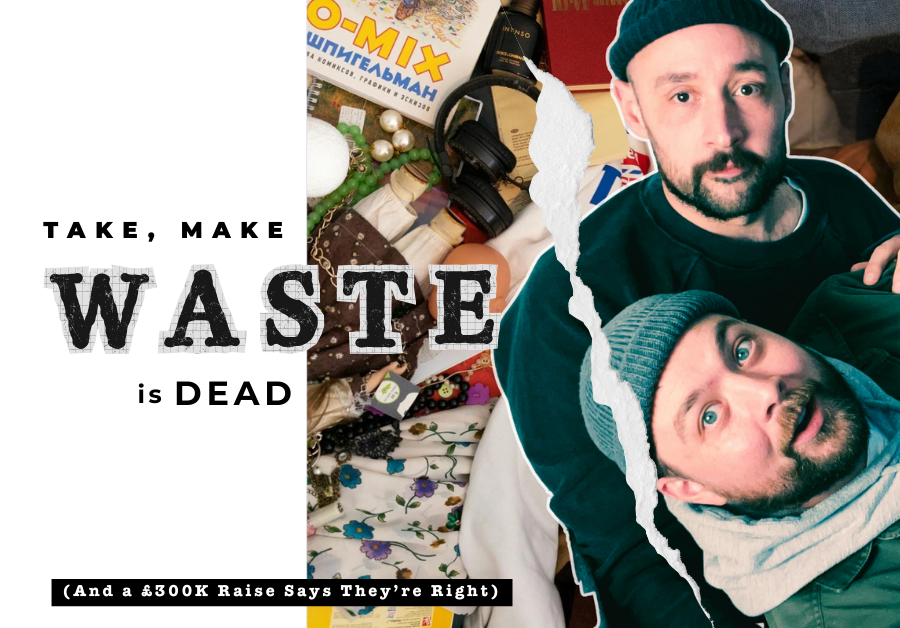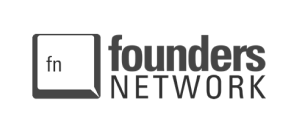Imagine sitting in a room with a firm of doctors. Each specialist carefully analyses every facet of a patient’s case. Everyone with their knowledge at play is geared to provide viable solutions to address the challenges they face.
Although the software design world may seem like a far cry from the medical field, they share a fundamental similarity: both revolve around problem-solving. Designers apply multiple practices to validate and authenticate solutions with our partners.
To align everyone, we set up Problem-Solving Workshops (PSWs). At its core, PSWs are a space to solve problems. Our team will dissect every aspect of the problem, identify potential challenges, and find the best solutions. Finally, we validate the process through testing.
Neil Webb, Design Producer and problem-solving workshop facilitator at MOHARA, shed light on how this process works by answering a few of our probing questions.
What Are Problem-Solving Workshops?
A problem-solving workshop is a collaborative event or session where participants come together to identify, analyse, and develop solutions for a specific problem or set of problems.
It could be a show-stopper of a problem that has stopped work or a way to identify improvement backlog items for your next sprint. The main goal of this process is to foster creative thinking, encourage teamwork, and facilitate learning by sharing ideas, experiences, and perspectives.
A typical problem-solving workshop can take many forms but include the following steps:
➡️ Define the problem: Clearly define and understand the problem(s) to be addressed.
➡️ Brainstorming: Encourage open discussion and the sharing of ideas, allowing participants to think freely and creatively.
➡️ Analysis and evaluation: Analyse and evaluate the proposed ideas, considering their feasibility, effectiveness, and potential impact.
➡️ Solution development: While considering available resources and constraints, develop and refine the most promising ideas into actionable solutions.
➡️ Implementation planning: Create a detailed plan for implementing the chosen solution(s), including timelines, responsibilities, and resource allocation.
At MOHARA, our problem-solving workshops are our take on a Google design sprint. It is a time-constrained, rapid five-stage process to answer essential product questions. It speeds up the design process and lets you quickly test and iterate your ideas.
As a result, you can shortcut the endless debate cycle and compress months of thinking and iteration into a single idea. Therefore, you are reducing risk at a basic level and saving a founder time and money.
What Are the Fundamentals of Setting Up a Problem-Solving Workshop?
Running a successful problem-solving workshop needs the founder’s support. Given that it is their idea and they have already devoted considerable time and effort to research, their insights are extremely valuable. Communicate the workshop’s objectives and deliverables to get the founder’s buy-in.
Assemble a workshop team of five to seven people including a Facilitator, a Lead Designer, a Lead Engineer, and possibly an Engagement Lead. In the case of a large organisation, including more than one stakeholder from the company – ideally subject matter experts – enriches the collaboration and decision-making process.
How Do You Facilitate a Problem-Solving Workshop?
The process should begin with a week of research, onboarding, and setup. To start with, one has to understand the most significant root cause of any given problem.
To achieve this, we interview the client and other key stakeholders and ask them to fill out a pre-workshop questionnaire. This information helps the MOHARA team understand the founder’s vision and long-term goals.
A traditional in-person workshop happens over four to five days. The activities on the first day are all about aligning ourselves as a team to understand the users, their needs, and the different challenges they may face during the product development cycle.
Several problem-solving techniques can be used to brainstorm solutions and get the best outcome. The idea is to choose your product’s most suitable and effective strategy.
How Does Conducting Remote Problem-Solving Workshops Impact the Process?
The shift to remote work has altered our approach to conducting workshops. While we at MOHARA are accustomed to working remotely, the absence of in-person sessions does pose some challenges.
Usually, we can go through the different phases within a week. But, remotely, it’s slightly different: you can’t have someone in a workshop call all day long; the sessions are intense and require a lot of focus.
We must slow things down for the sake of everyone taking part because these sessions help us understand whether users will receive a feature or product well.
We split the PSWs into one or two workshops a week. We then build the prototype, providing daily feedback and ensuring the founder understands what we’re doing, and why.
Having the Right Setup Is Essential for a Remote PSW
For a problem-solving workshop to be successful, the right setup is critical. When we are conducting a session remotely, we do the following:
➡️ Prebuilt templates: Templates are designed in advance for different sessions. The templates help guide all participants through multiple activities and checkpoints and revisit relevant information at any point.
➡️ Set up whiteboard software: We also use interactive whiteboard products to create a space for collaboration and review. Timelines, key deliverables, and communication are other significant factors in ensuring the process is smooth, and that the client feels comfortable and understands where we are going.
What Are the Next Steps?
Participants envision the solution to an identified problem during an ideation session where they sketch out ideas and concepts. The aim is to look for as many ideas as possible and examine examples and relevant cases they have come across elsewhere.
The team will then consider how certain features could resolve a critical challenge. There may be many ideas on how to solve the challenge faced, so the next decision-making stage is very valuable. The team and stakeholders decide which solution and critical features they would like to test and then turn that solution into a high-fidelity prototype.
The last part of the problem-solving workshop focuses on qualitative testing. We want to gain valuable feedback from actual users, so selecting them carefully is imperative. We ask participants to perform tasks, usually using specific user interfaces. While the participant completes each task, we observe the participant’s behaviour and listen for feedback.
What Role Does Prototyping Have in a Workshop Process?
Much of this process is about speed. We do not want to start building anything in code at this stage. Instead, using Figma – our prototyping tool of choice – the designer will lay out various screens and connect them with the specific steps we want users to take.
Based on some of the critical questions defined in our sessions, we will share a link with the users and then give them particular tasks we want them to carry out. We can then test which, if any, of our assumptions were correct, and start to think about some of the primary user journeys, the user experience, and other core features.
What Are the Most Overlooked Aspects of a Problem-Solving Workshop?
There are three aspects of a problem-solving workshop that is often overlooked:
🔶 It’s not a design sprint
It’s important to understand that the entire process is not just about design. There needs to be some technical expertise as well. That is why we don’t call these Design Sprints but rather PSWs. It’s about using design and engineering to solve a problem.
🔶 It’s essential to keep the energy up
One of the significant challenges regarding remote workshops is how much energy is required. If you’re in a room full of people like we used to be, you could generate solutions, get everyone together and build up the excitement.
However, doing it over a screen is tricky. It’s challenging to keep things energised and to avoid reviewing the same points and using valuable time.
🔶 Inclusion is also essential
The idea, especially with remote PSWs, is to ensure everyone has a voice. Only some people will speak up in a session. Naturally, some people are more vocal than others, and these people will generally lead the conversation.
If someone else, however, is given the opportunity to share even the slightest valuable insight, it could change the whole direction of the team’s solutions. It only takes one comment, or perhaps a note. For this reason, everyone must have a voice.
Are There Any Pitfalls?
Several things can go wrong during the process. Someone might drop off a call or have connectivity issues interrupting the flow. We’ve also had situations where the hardware doesn’t work correctly.
From a facilitation point of view, having a plan for each product-solving workshop and a clear outline of what will take place, are essential. That means mapping out the different activities and ensuring people know how long each activity will take. This plan keeps everyone aligned, and the PSW will only be successful with it completed ahead of time.
Lastly, user testing has to be qualitative rather than quantitative because, at this point, you’re asking for detailed information and feedback on the tasks they’ve had to do, particularly to identify any problems. You would need more than quantitative research to get that kind of data.
Do You Have to Check In with Various Stakeholders After the Workshop?
Yes. Client feedback is always valuable. It’s essential to get an update on how they are getting on from a product perspective, as well as gather their insights and feedback on the PSWs process.
Suppose we agree with the client to do further design work post-prototyping or engineering (or both). We would already have discussed those later-stage design phases in more detail during some of the sessions. By the way, this is another reason why having an engineering representative there during these sessions is so valuable.
During the PSWs, we would then compile a list of challenges to write up as questions that we aim to answer with our solution by the end of the workshops. After the PSWs have concluded, we provide feedback in the form of reports with user testing results, including data, a breakdown, and evidence of all the conducted activities.
What Do You Enjoy Most About Setting Up Problem-Solving Workshops?
It’s creative problem-solving at its finest! I enjoy engaging with founders and experiencing their passion for their products. It’s also great to work with the engineers, watch how they engage in the sessions, and identify solutions; having those different viewpoints is essential.
Setting up the workshop is enjoyable, too, because it involves using design tools that are constantly evolving; I am a designer at heart, after all.
Summary
Effective planning is the way to foresee risks and aim for success. Now that you have the lowdown on Problem-Solving Workshops, we suggest calling the relevant troops to get started.
It takes a team of experts to navigate challenges and produce a product that makes one proud. So get your tools packed; with Neil’s guidance and tips, you’re certainly off to a good start!
If you find you need more help with problem-solving, why not get in touch with MOHARA?











